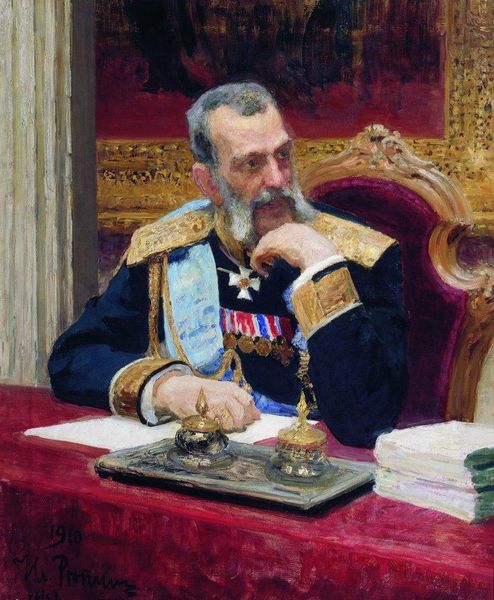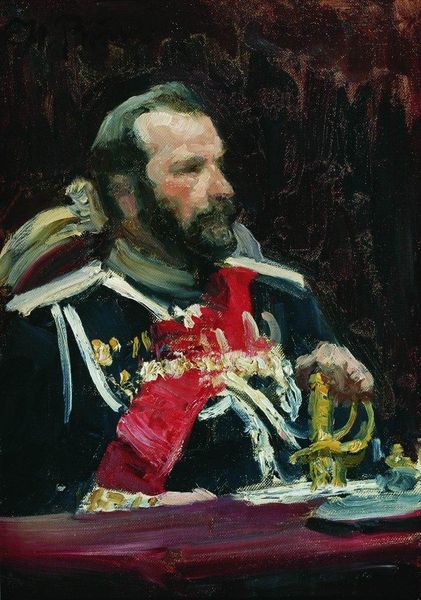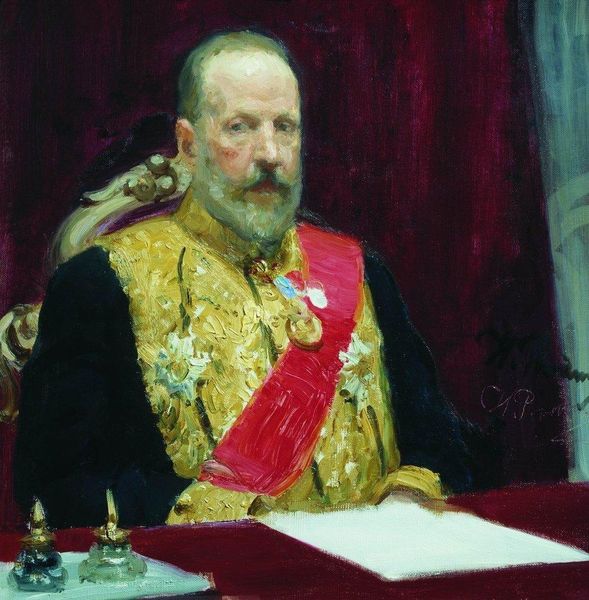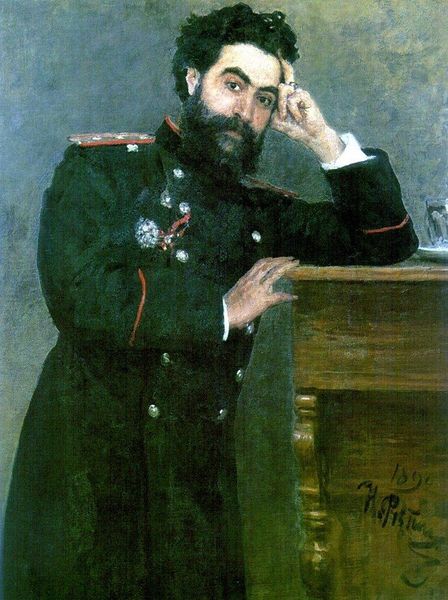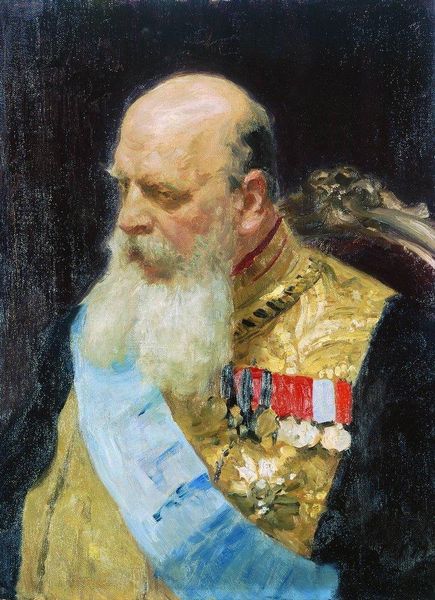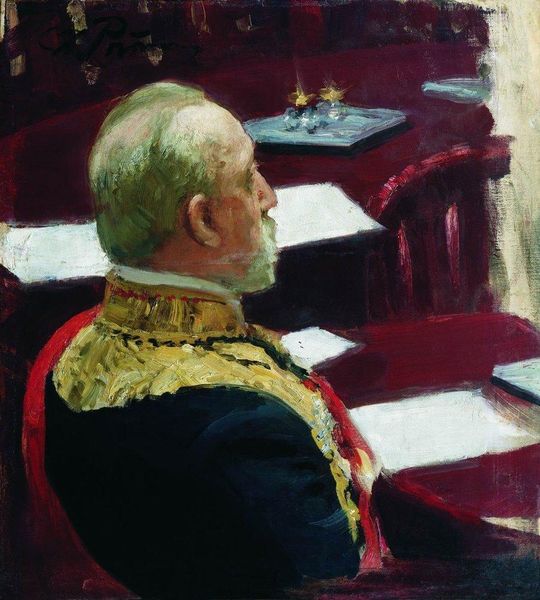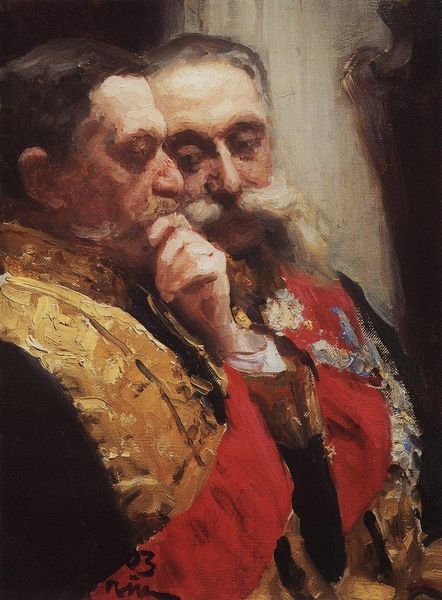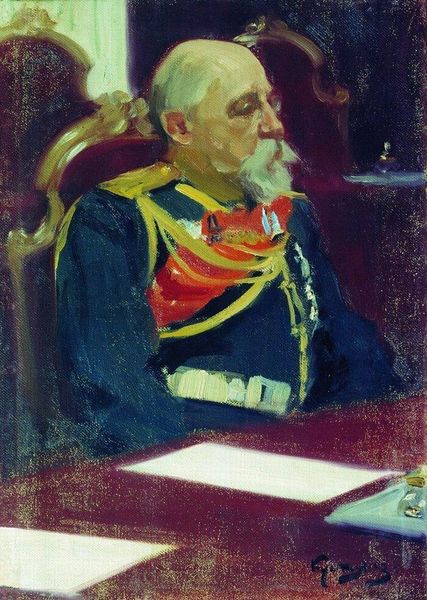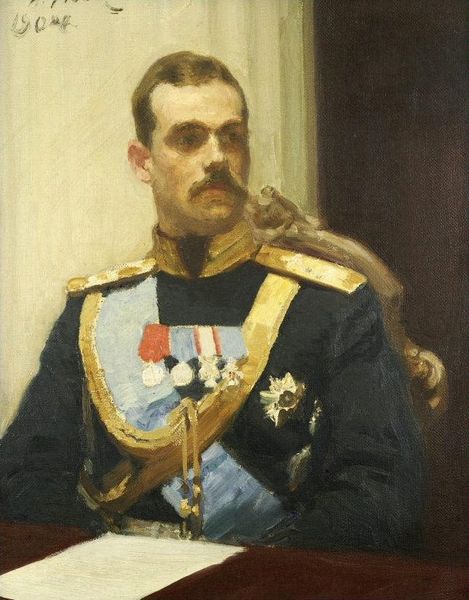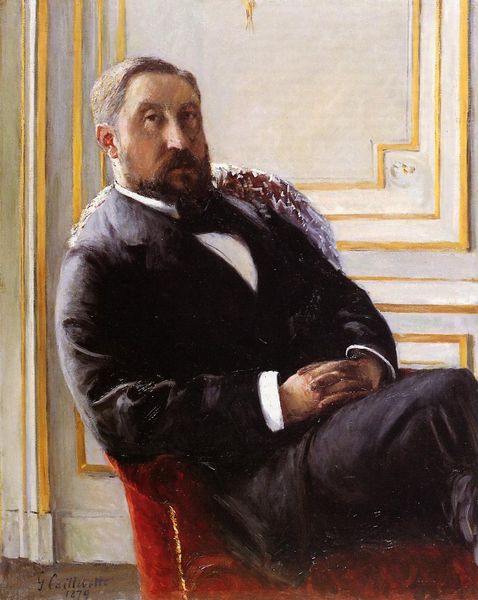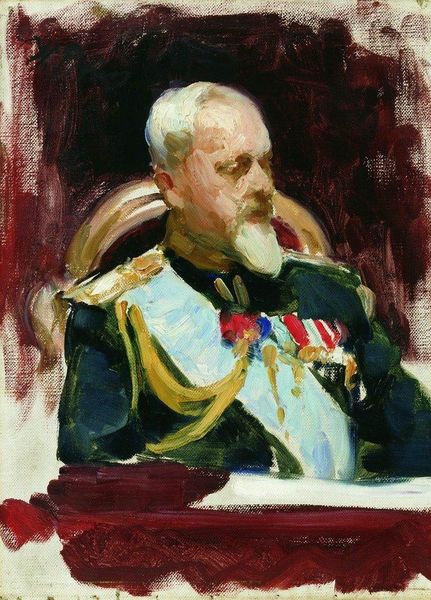
Portrait of member of State Council and Grand Chamberlain, Prince Mikhail Sergeyevich Volkonsky 1903
0:00
0:00
Copyright: Public domain
Editor: Here we have Ilya Repin’s 1903 painting, "Portrait of member of State Council and Grand Chamberlain, Prince Mikhail Sergeyevich Volkonsky," done with oil paint. It has such a weighty presence... the red and gold feel so formal. What symbols or stories do you see in this piece? Curator: It's fascinating how Repin captures Volkonsky. The red and gold aren’t merely decorative, but communicate power. Consider how these colours echo throughout history – imperial robes, religious icons. They resonate with authority. Even the way he’s seated behind a table covered with papers implies business, duty, law... It all adds layers of symbolic meaning to Volkonsky’s status and role. What feeling do you get from the gaze itself? Editor: The gaze is intense! There is a slight sadness, like he is burdened by duty or responsibility, a weariness maybe. It contrasts with the opulence. Curator: Precisely. The weariness speaks to a human element beneath the Grand Chamberlain's finery. Symbols often present dualities; Volkonsky's adornments present status and accomplishment, but they also signal confinement within the rigid structures of the Russian state. His melancholic gaze acknowledges a personal cost, and suggests something deeply complex about the weight of his position. Editor: I hadn’t considered that dichotomy before, how symbols can be both affirming and confining at the same time. Curator: Exactly. It gives us much to consider about the subject of Repin’s portrait and the burdens of authority that Volkonsky seems to carry, but that is one purpose of symbols: to connect us across eras of human existence through their ever-changing, complex meanings. Editor: I'll never see portraits the same way again. There is much more beneath the surface.
Comments
No comments
Be the first to comment and join the conversation on the ultimate creative platform.
